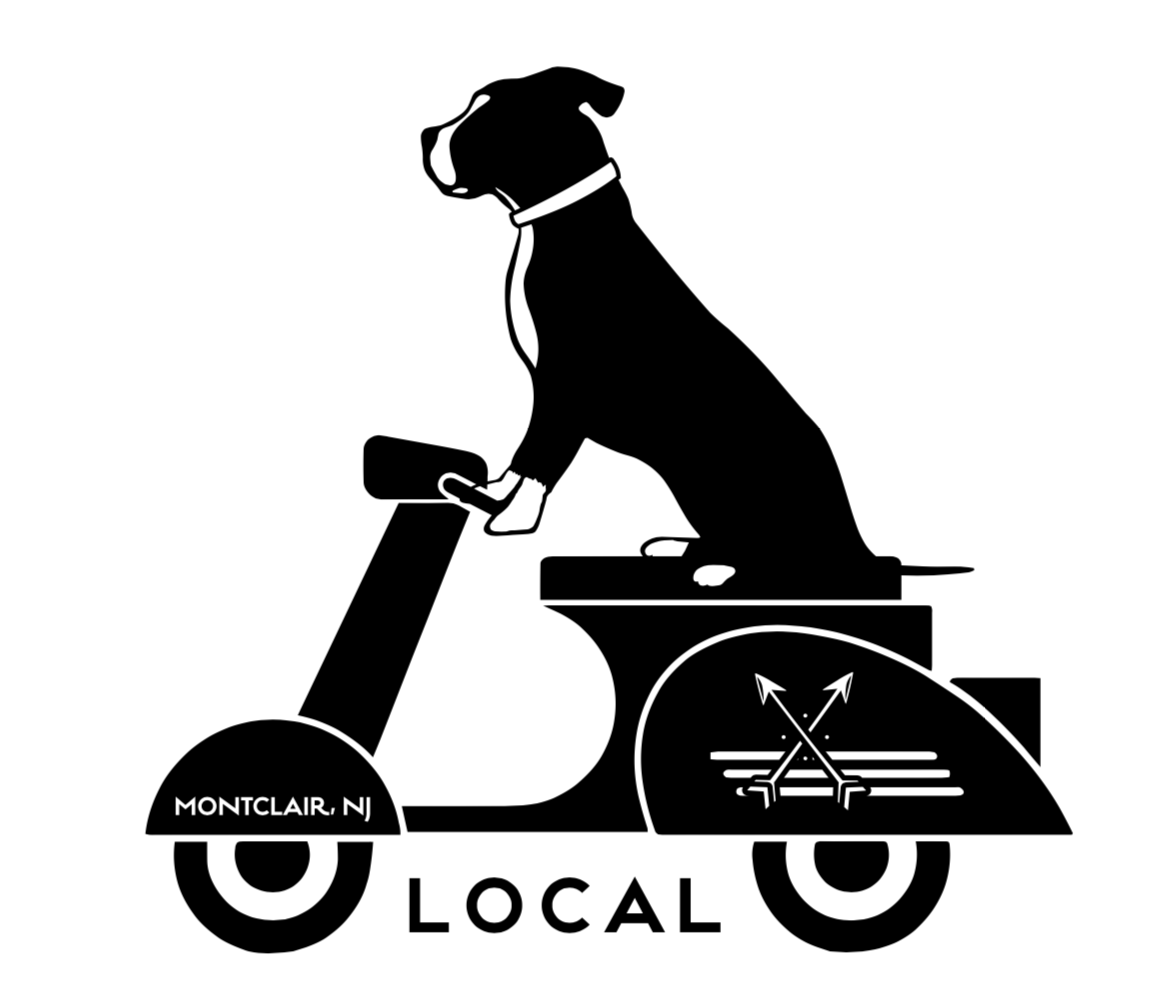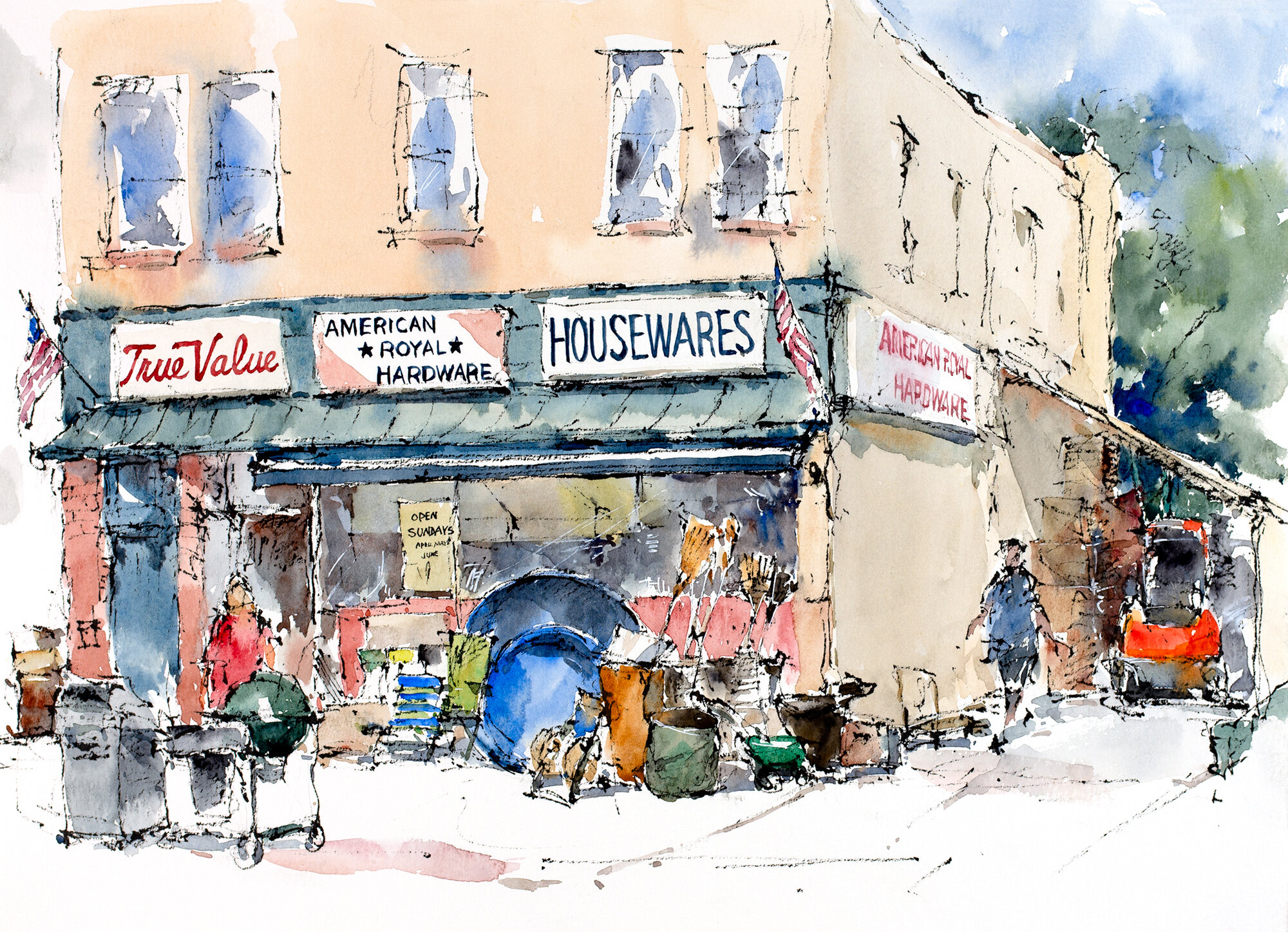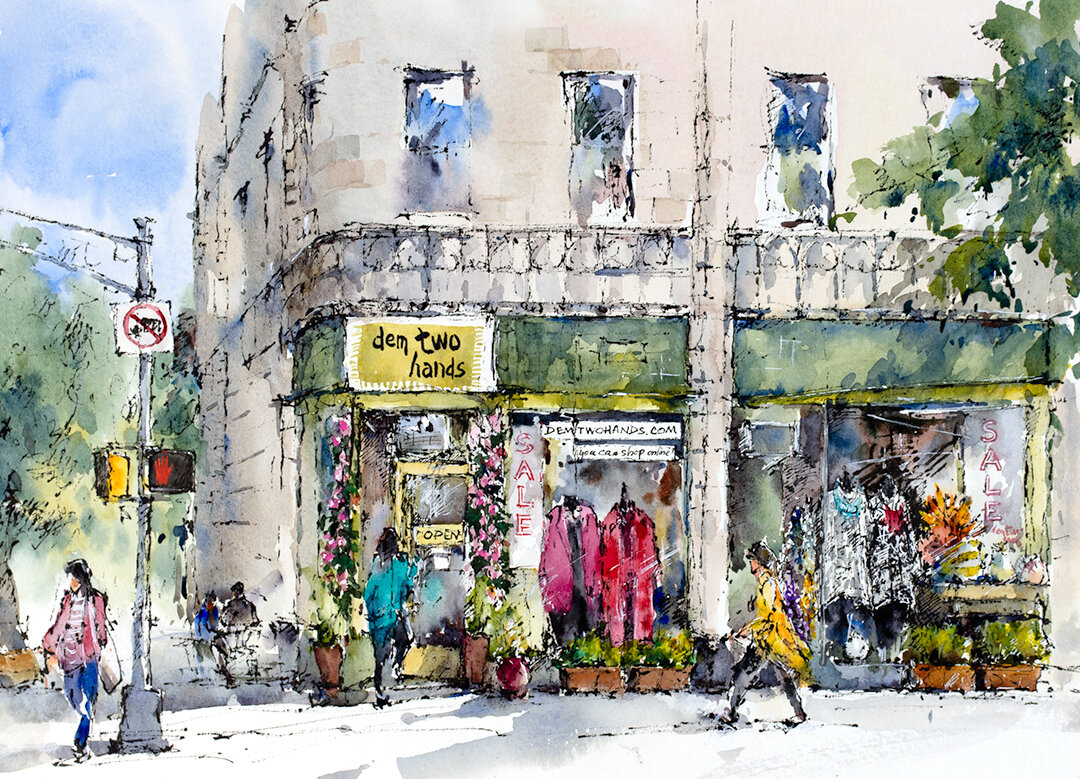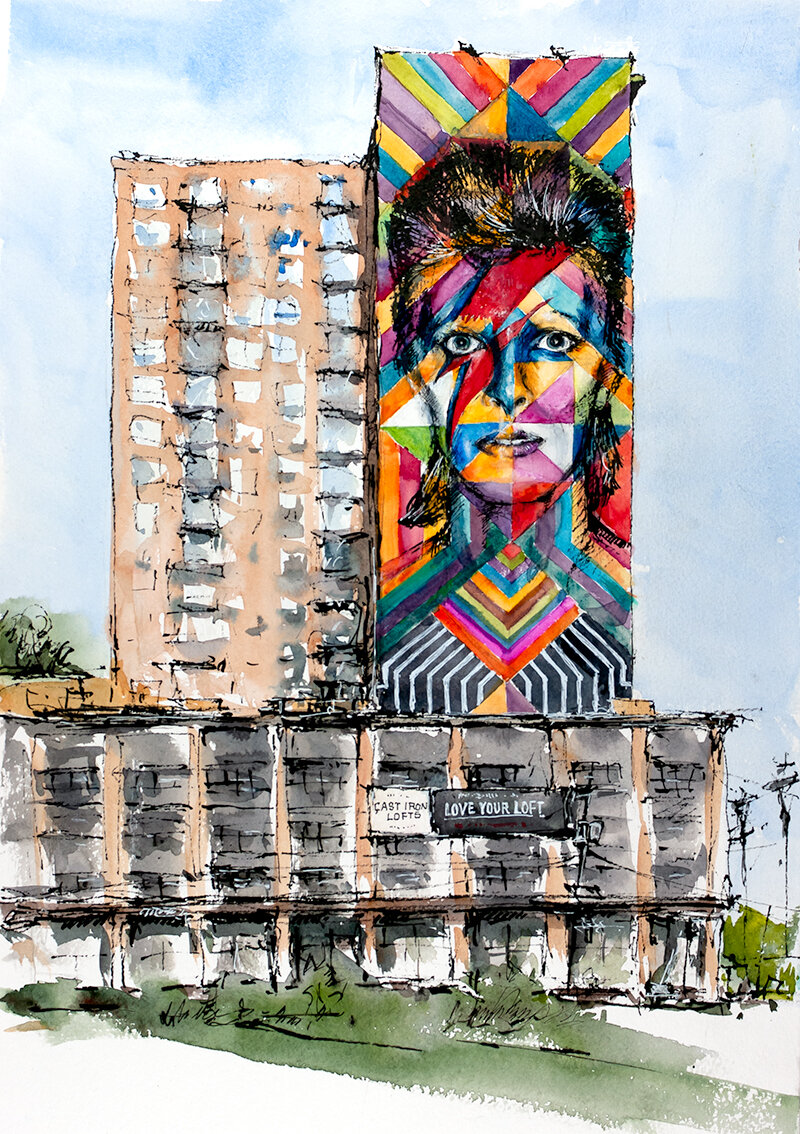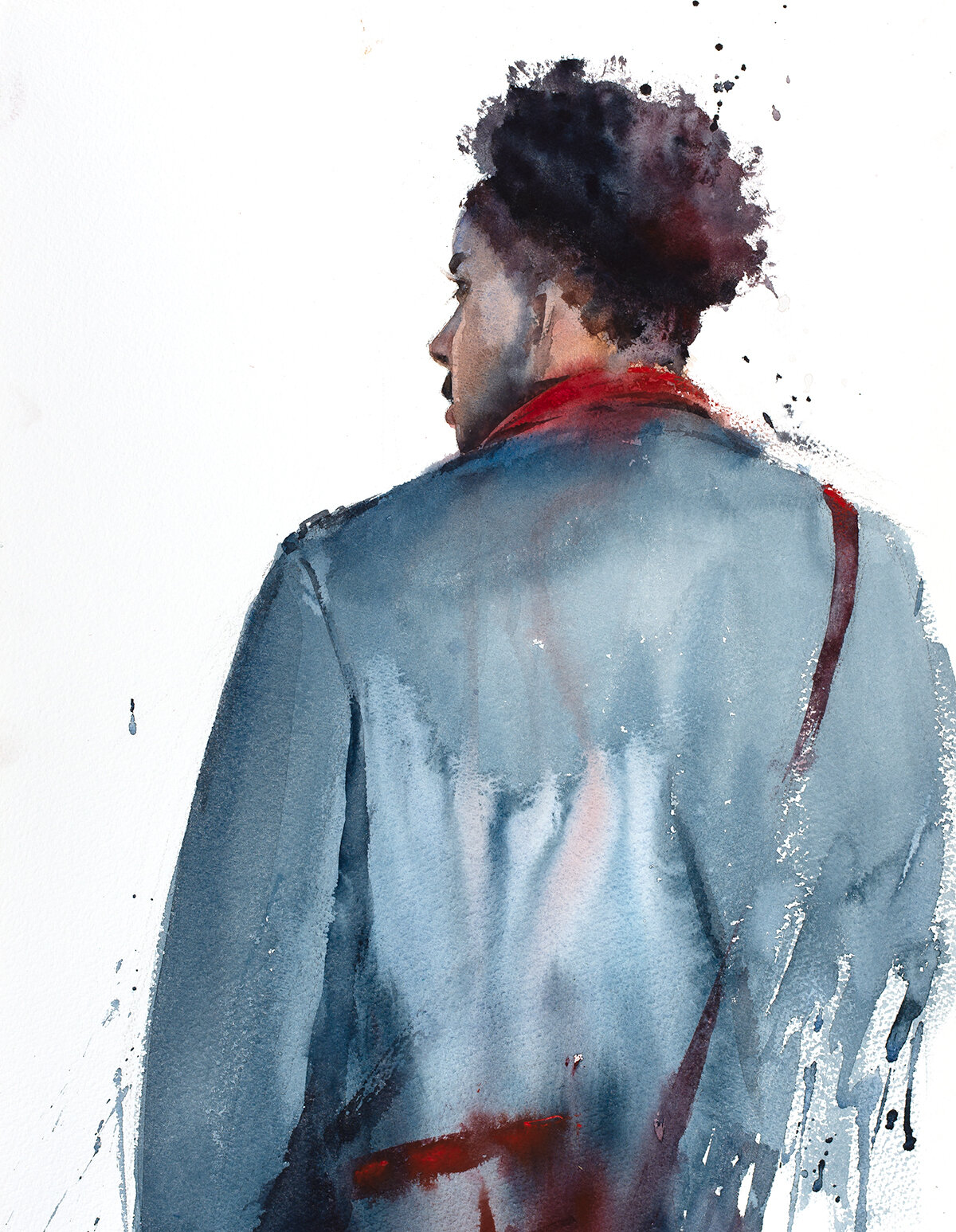Let's get right to it! Please tell us about the dark, seedy, underbelly of the world of watercolors!
Can’t tell ya because I kinda live under a rock (yes, in the world of watercolors as well). I am rather ignorant of the bubbly local art scenes and am really bad at remembering names. Thanks to the Internet, I got to admire the wonderful works of the watercolorists from around the world and to drool over their work virtually. For me, the best watercolor is fluid, spontaneous, and captures the mood and atmosphere without spelling out every detail. Water and pigments interacting with the help of gravity can do wonders.
So you're saying that WYSIWYG? I have to believe that there's more in that image than a beautiful representation of a person, place or thing?
Luckily what you get is more than what you see sometimes, although I cannot claim credit for that. When people look at the sketches of Local Coffee, they’re reminded of the cappuccino and the amazing owner who-shall-not-be-named. And people reacted warmly to my sketch of American Royal Hardware because they just love that place. I captured the moments and places as I see it, and viewers enrich it with their own fond memories.
OK, I tease you because you have this wonderful sense of humor and your work is obviously beautiful and moving AND everyone loves it. How did you get started?
Whew! I’d be devastated if you had neglected to notice or praise my wonderful sense of humor.
I learned how to draw in middle school. In an after-school drawing club I became really good at cross hatching while drawing still life with graphic pencils. Fast forward 30 years, I started to draw again since my life was overwhelmed with work and kids. I did Saturday classes for a few months and attended a few weeklong watercolor workshops. It was a surprise that I improved quickly. I took on sketching because that’s something I can squeeze during the little free time I had - waiting at the airport during work trips, or hanging out at the playground with kids. The type of city sketches you see here actually started in May 2018. A friend of mine and I attended our first Jersey City Artist and Makers Fair where I had a total of 3 sketches of Jersey City downtown. A couple of prints were sold and people asked for more. And that started my journey documenting my neighborhood. The more I sketched, the more to sketch to capture the changing face of the places.
Perhaps a silly question but how did you get SO good? I mean, c'mon - this work is masterful.
I wish I could agree with you, but I appreciate you believing so. Drawing from direct observations on location helps, I believe. It forces you to capture what you see and how you feel instead of every little detail that a photograph captures. Showing how people interact with a place brings a piece to life.
I had the pleasure of meeting your 84 year old mom who is adorable and has quite a bit of spunk. How influential was mom in your life and while developing your craft?
My daughter recently commented on how strong grandma was rolling the dough when she demonstrated how to make scallion pancakes, unimpressed with the wimpy attempts by the youngsters. She used to run an editorial department in a rolling stock (trains, that is) research institute publishing periodicals and books. And she dedicated her entire self taking care of the family. She hand-made dumplings, noodles, sewed clothes, knitted sweaters, and made hats and shoes - not as a hobby but often as a necessity. After she retired, she took on Chinese painting and shocked all of us with her art talents. But then she readily gave that up and came to take care of her grandkids - my babies could win the cleanest bottoms contest and the fervor in feeding her grandchildren is unmatched. I have half of her talents and a quarter of her drive. I taunt my kids that my mother is better than their mother.
I noted how fast you are when creating each of these works. Was that a need based skill OR was there another reason you are so expeditious?
Yes and yes. It certainly started as need-based. I was sketching while watching my kids at the playground, and as any parents have well practiced, I was prepared to jump into action at any time. I also really like to capture the moments, such as music performance on stage, and those moments are fleeting. Some of the work I personally like most are those created within 5 minutes.
Aside from your Local storefront watercolor being your favorite (obv), what comes in as a close second for your favorite work (Montclair or otherwise)?
You forgot I have two sketches of Local, that make my two favorite works. Of Local.
I like Dem Two Hands. I like the color and felt I captured the spirit of that beautiful place.
I also like a few sketches of murals - Jersey City has plenty of them. It’s like picture-in-picture.
This question is for my sister, an aspiring watercolor enthusiast - what tips can you offer someone seeking to up their approach to this discipline?
First, learn from the best, I mean, the very best, even from the beginning. My first watercolor workshop was with David Taylor, a watercolor master from Australia. I was such a newbie that I was identifying basic colors such as Ultramarine Blue and Raw Ciena in the evening after day 1 of the workshop. By the end of the week, I produced some of the best work among the workshop attendees, partially because I didn’t need to unlearn anything. Joseph Zbukvic, another Australian artist, is an absolute master in watercolor. He has an amazing process that makes painting landscapes seem effortless. I also learnt from Eudes Correia, a Brazillian artist in Portugal. I love how he paints people.
Second, do what feels natural to you. I learned how to paint watercolor from those masters mentioned above, but I sketch in my own style. I use a calligraphy pen filled with permanent ink to sketch first, and use watercolor on top of it. Scribbling the lines feels natural to me.
Learn more about Ling Chen here
